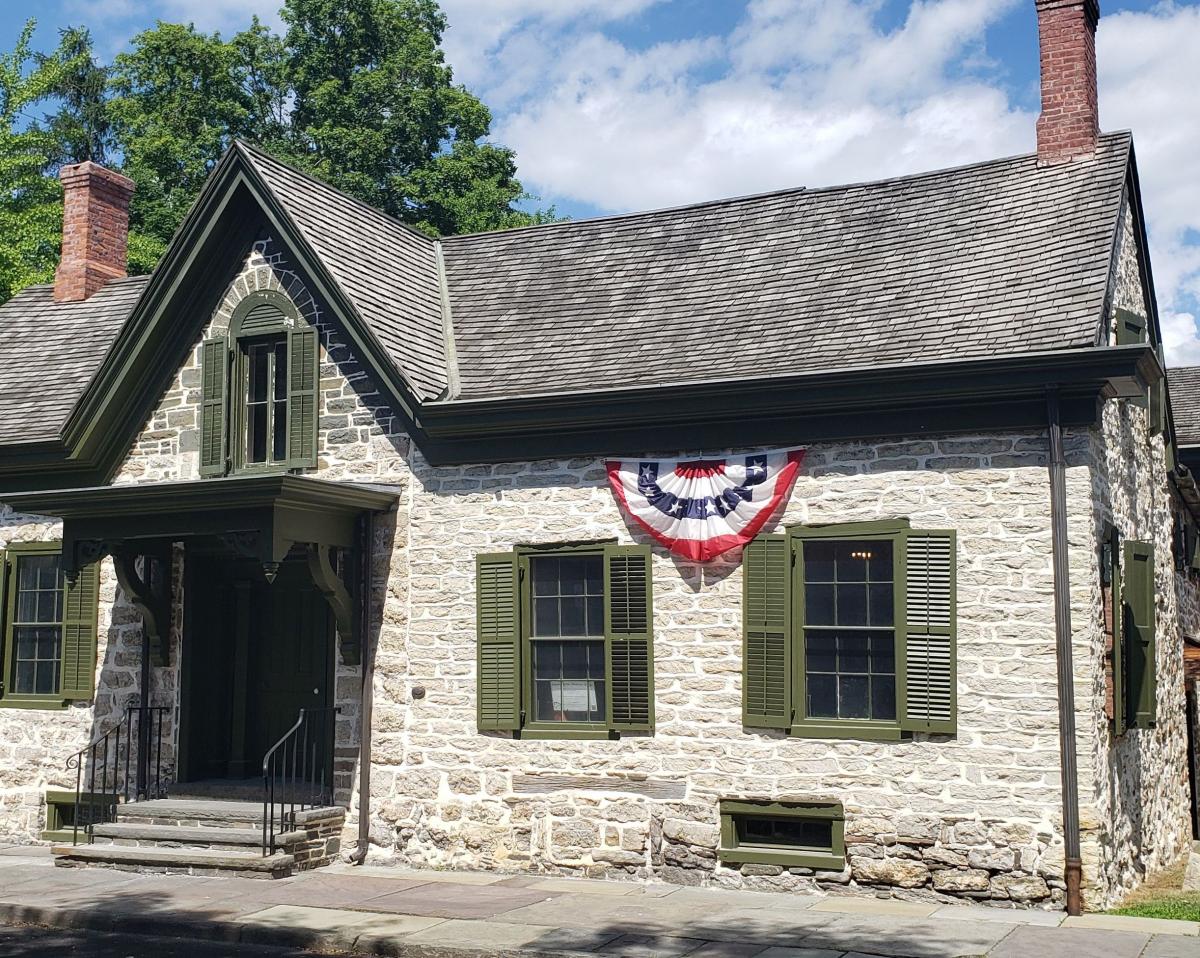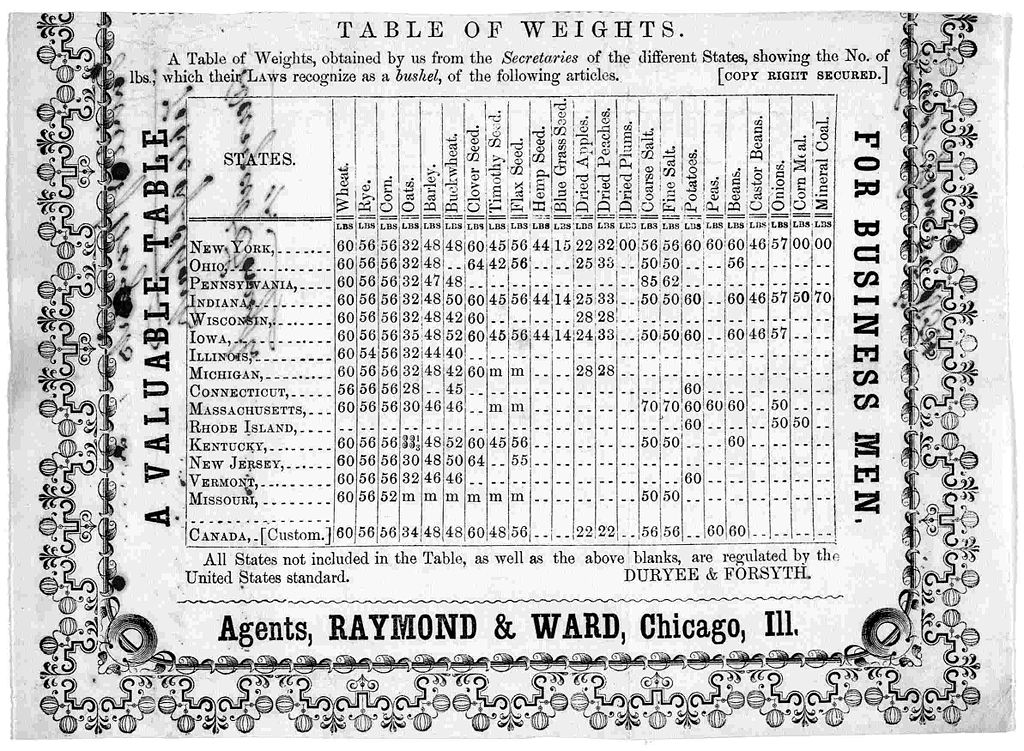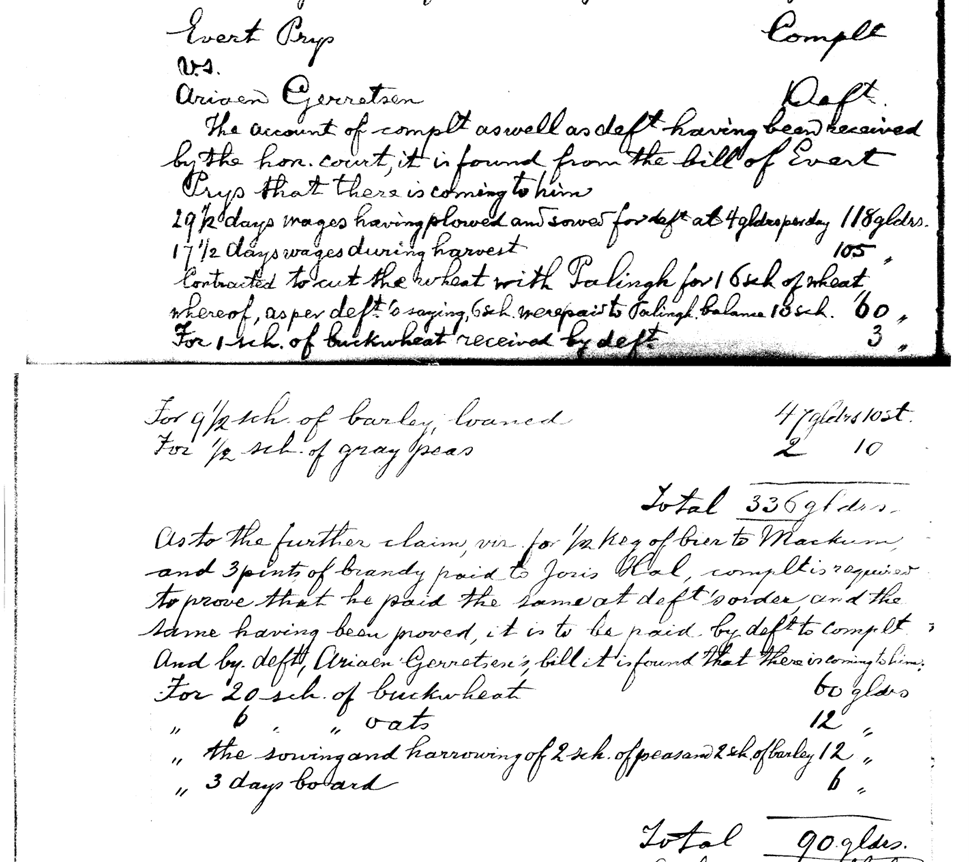<< Previous Room on the Tour - Phase 1 Upstairs
Learn More
Phase 2 (c.1669-1698) Upstairs

Schepels

During the colonial period in Wiltwyck, Dutch Court records frequently listed schepels of wheat and other grains as forms of payment for goods and services. Although wheat was not an ideal form of currency, it was valuable as both a commodity and a means of exchange. The size of a schepel (about 3/4 of a modern day bushel) was regulated, making it a reliable unit of measurement, and its shelf life allowed it to be transported by foot, wagon, or boat. Unlike government-issued currency, schepels of wheat were not subject to inflation, nor could they be produced without labor.
In the absence of hard or heavy money (coins), other forms of currency were used in New Netherland. Wheat was a common trade good used for payment of a barn and lot, as it was commonly grown in Wiltwyck and nearby fields. Overall, the use of wheat as a currency demonstrates the importance of agriculture and the exchange of goods in the early colonial economy.
Guilders

A Dutch guilder was the official currency of the Netherlands during the colonial period of New Netherland. The guilder was a silver coin that had a fluctuating exchange rate with other currencies, including the Spanish dollar that was also commonly used in the colony. The value of the guilder varied over time and depended on factors such as inflation and changes in trade patterns. However, in the mid-17th century, the exchange rate between the guilder and the Spanish dollar was roughly 3 to 1 in New Netherland. This meant that one guilder was worth approximately three Spanish dollars.
The guilder was the official currency of the Netherlands for several centuries, from the 17th century until it was replaced by the euro in 2002. However, the value and specifications of the guilder changed over time, with several versions of the currency being introduced and retired throughout its history.
Stoves

In Phase 2 upstairs, there is a round chimney connection, which indicates that it was designed to accommodate a specific type of stove. Based on the characteristics of the chimney connection, it is believed that the stove in question was a six-plate stove. These stoves were popular in colonial America and were made by encasing six plates on all four sides, as well as the top and bottom.
According to John Stevens, in his book "Dutch Vernacular Architecture in North America, 1640-1830," the stoves that were commonly used in Dutch-American houses were manufactured in Germany or by foundries in Pennsylvania after 1727. The plates used to construct these stoves were often decorated with religious scenes and texts. In addition, the plates sometimes featured a date or the name of the stove maker. The stove's design and decoration would have reflected the owner's social status, as these stoves were expensive and considered a luxury item in colonial times.
Given that Matthewis Persen was a tavern owner and a prominent member of the community, it is likely that he would have invested in a six-plate stove, which was a relatively expensive and sophisticated piece of technology at the time. In addition to providing heat, the stove would have allowed Persen to warm food and drinks for his customers, making his tavern a more comfortable and hospitable place to visit.
Additional Resources
- Harris, H. (2013, October 22). A Collection of Stoves from American Museums, I: Plate Stoves [web log]. Retrieved May 8, 2023, from http://stovehistory.blogspot.com/2013/10/a-collection-of-stoves-metropolitan.html.
- Heckscher, M. H., & Bowman, L. G. (1992). American Rococo, 1750-1775: Elegance in ornament: Exhibition catalogue. Abrams.
- Stevens, J. R. (2005). Dutch Vernacular Architecture in North America, 1640-1830. Society for the Preservation of Hudson Valley Vernacular Architecture. (Available in hardcopy to view in the Archives Reference Library.)
March 9, 1666 Court Record
Translation and transcription of the Dutch court document featured on the panel in Phase 2 upstairs.

The following is a transcription of the above case from the English translations of the original Dutch court records:
Evert Prys Complt v.s. Ariaen Gerretsen Deft. The account of complt as well as deft having been received by the hon. court, it is found from the bill of Evert Prys that there is coming to him. 29 1/2 days wages having plowed and sowed for deft at 4 gldrs per day 118 gldrs. 17 1/2 days wages during harves 105 gldrs Contracted to cut the wheat with Palingh for 16 sch of wheat, whereof, as per deft's saying, 6 sch. were paid to Palingh balance 10 sch. 60 gldrs For 1 sch. of buckwheat received by deft 3 gldrs For 9 1/2 sch. of barley, loaned 47 gldrs 10 st. For 1/2 sch. of gray peas 2 gldrs 10 st. Total 336 gldrs. As to the further claim, viz. for 1/2 keg of bier to Mackum, and 3 pints, of brandy paid to Joris Hal, complt is required to prove that he paid the same at deft's order, and the same having been proved, it is to be paid by deft complt. And by deft, Ariaen Gerretsen's, bill it is found that there is coming to him: For 20 sch. of buckwheat 60 gldrs For 6 sch. of oats 12 glrs For the sowing and harrowing of 2 sch. of peas and 2 sch. of barley 12 gldrs For 3 days board 6 gldrs Total 90 gldrs

